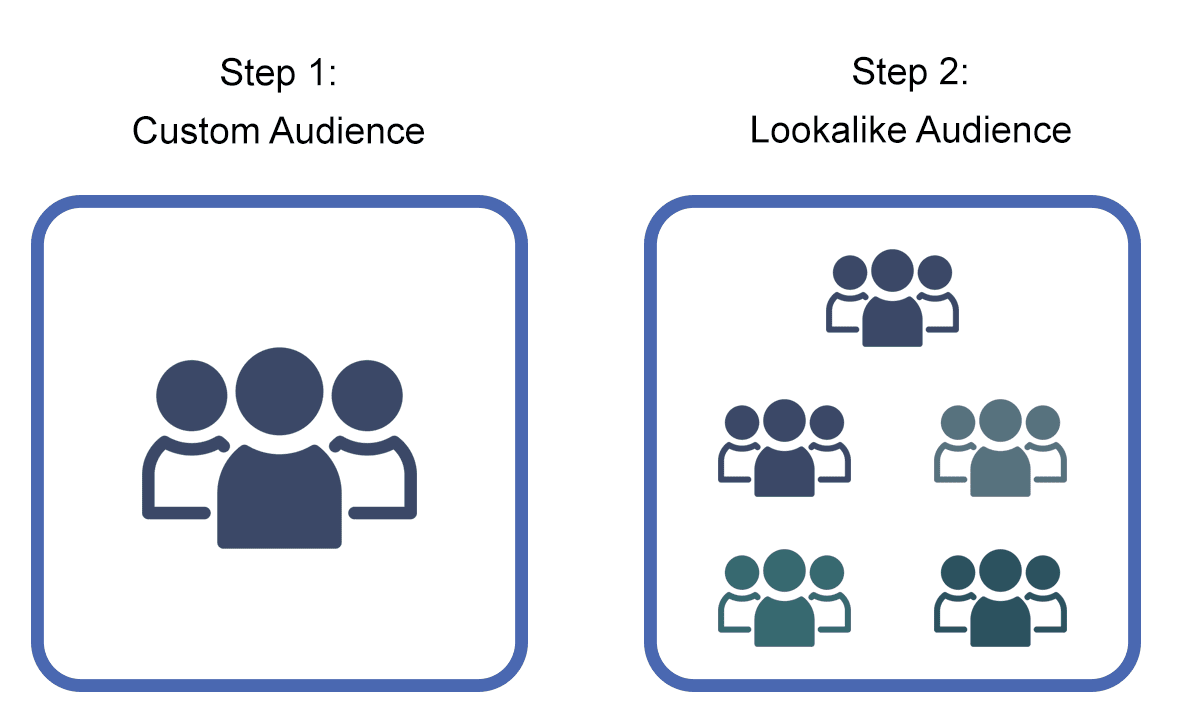Lookalike Audiences Explained: Complete Guide
Lookalike audiences are one of the most powerful tools in digital advertising. They allow you to reach new people who are similar to your existing customers or audience, helping you expand your reach and improve the effectiveness of your campaigns. Let’s dive into the details of what Lookalike audiences are, how they work, and how you can use them to maximize the impact of your advertising efforts.
What Are Lookalike Audiences?
A Lookalike Audience is a type of audience that you create based on the characteristics, behaviors, and traits of your existing audience, whether it’s your customers, website visitors, or social media followers. The goal of a Lookalike Audience is to find new individuals who share similar attributes with your current audience, making them more likely to engage with your ads and convert into customers.
Lookalike audiences use data to find people who have similar interests, behaviors, and demographics as your original audience, leveraging the power of machine learning and algorithms.
How Lookalike Audiences Work
Lookalike audiences rely on your source audience. A source audience is a group of individuals who have already taken an action that you value, such as making a purchase, signing up for a newsletter, or engaging with your content. The more high-quality data you can provide, the better your Lookalike Audience will be.
Steps in Creating Lookalike Audiences
- Source Audience: First, you need to have a source audience. This could be your email list, website visitors, customer data, app users, or even social media followers. The source audience is crucial because the more detailed and accurate this group is, the better the Lookalike Audience will be.
- Audience Matching: Platforms like Facebook, Google, or TikTok use algorithms and machine learning to find people who have similar characteristics to your source audience. They look at demographics (e.g., age, location), interests, behaviors (e.g., purchase history), and interactions (e.g., engagement with your content).
- Creating the Lookalike Audience: Once the platform matches the traits of your source audience, it will create a Lookalike Audience. Typically, you can control the size of the Lookalike Audience, ranging from 1% to 10% of the population in your selected target country. A 1% Lookalike Audience represents the 1% of people who are most similar to your source audience, making it highly targeted. A 10% Lookalike Audience includes a broader group but may be less targeted.
- Optimization: The platform will continuously optimize the Lookalike Audience based on how well your ads are performing. Over time, it becomes more refined as the algorithm learns what kinds of users are converting.
Key Benefits of Lookalike Audiences
- Increased Reach: Lookalike audiences help you reach a new, larger pool of potential customers who are more likely to be interested in your product or service. Instead of targeting broad interest groups, you’re targeting people who closely resemble your current customers.
- Improved Conversion Rates: Because Lookalike Audiences consist of individuals who share similar characteristics to those who have already interacted with your business, they are more likely to convert. This leads to higher conversion rates and better ROI.
- Cost-Effective Advertising: Targeting people who are similar to your existing audience can reduce wasted ad spend. You’re reaching a more qualified audience, which can lower your cost per click (CPC) or cost per acquisition (CPA).
- Efficient Scaling: If you have a successful campaign that is performing well with your current audience, Lookalike Audiences allow you to scale up your efforts and expand to a new set of users without losing the effectiveness of your campaign.
- Audience Segmentation: You can create multiple Lookalike Audiences based on different source audiences (e.g., website visitors, email subscribers, or past customers). This allows for more granular targeting and better campaign customization.
How to Create Lookalike Audiences on Popular Platforms
1. Facebook/Instagram (Meta Ads)
- Step 1: Go to Facebook Ads Manager and click on the “Audiences” tab.
- Step 2: Click “Create Audience” and choose “Lookalike Audience.”
- Step 3: Select your source audience (e.g., customer list, website visitors, or Facebook page followers).
- Step 4: Choose the country or region where you want to find your Lookalike Audience.
- Step 5: Select the audience size (1% to 10%). The smaller the percentage, the more closely the audience will match your source audience.
- Step 6: Click “Create Audience” and use it in your ad campaigns.
2. Google Ads (Customer Match)
- Step 1: Sign in to Google Ads and go to the “Audiences” section.
- Step 2: Under “Audience Manager,” select “Create Audience” and choose “Customer List” or “Website Visitors.”
- Step 3: Upload your source data (e.g., customer email list).
- Step 4: Google will match your list with its user database and create a Lookalike Audience.
- Step 5: Use this audience for targeting in your Google Ads campaigns.
3. TikTok Ads
- Step 1: In TikTok Ads Manager, go to the “Audiences” section and select “Create Audience.”
- Step 2: Choose “Custom Audience” and select the source (e.g., website traffic or customer list).
- Step 3: TikTok will automatically create Lookalike Audiences based on your source audience.
- Step 4: Select the size of the Lookalike Audience and apply it to your campaigns.
Best Practices for Using Lookalike Audiences
- Start with High-Quality Source Data: The success of your Lookalike Audience depends on the quality of your source audience. Make sure your source is made up of high-value individuals, such as recent purchasers, loyal customers, or those who have engaged deeply with your brand.
- Test Different Audience Sizes: Test different Lookalike Audience sizes (1%, 5%, 10%) to see which one performs best. A smaller audience (1%) is highly targeted but might have a smaller reach, while a larger audience (10%) will have broader reach but potentially lower conversion rates.
- Use Retargeting with Lookalike Audiences: Combine Lookalike Audiences with retargeting strategies to further improve your results. For example, retarget people who have added items to their cart but didn’t check out, and then expand your reach with a Lookalike Audience based on that retargeted group.
- Layer Interest and Demographic Targeting: While Lookalike Audiences are already based on user behavior, you can layer additional targeting options (e.g., age, gender, location, interests) to fine-tune your campaigns and ensure the best possible results.
- Regularly Refresh Your Source Audience: Keep your source audience up-to-date to ensure that your Lookalike Audience remains relevant. If you are using an email list, for instance, make sure it’s updated regularly with new customers or engaged users.
Challenges and Limitations of Lookalike Audiences
- Size Limitations: If your source audience is too small, the Lookalike Audience may not be accurate or effective. A larger source audience generally leads to a more accurate Lookalike Audience.
- Platform Algorithms: The performance of your Lookalike Audience can vary based on how well the platform’s algorithm can match individuals. Sometimes, platforms may not be able to find a significant number of matches, which can lead to lower performance.
- Overlapping Audiences: If your Lookalike Audience overlaps significantly with other audiences you are targeting, it could lead to ad fatigue or inefficiency in your campaigns. Monitoring your audience overlap is key to ensuring effective campaigns.
- Cost of Acquisition: While Lookalike Audiences are typically more cost-effective than broad targeting, there may still be times when the cost per acquisition (CPA) is higher, especially if the Lookalike Audience size is large.
Conclusion
Lookalike Audiences are an incredibly powerful tool in digital advertising, allowing you to expand your reach while targeting individuals who are highly likely to engage with your brand. By leveraging the right source audience, optimizing your targeting, and continuously testing and refining your campaigns, you can use Lookalike Audiences to grow your business effectively and efficiently.


